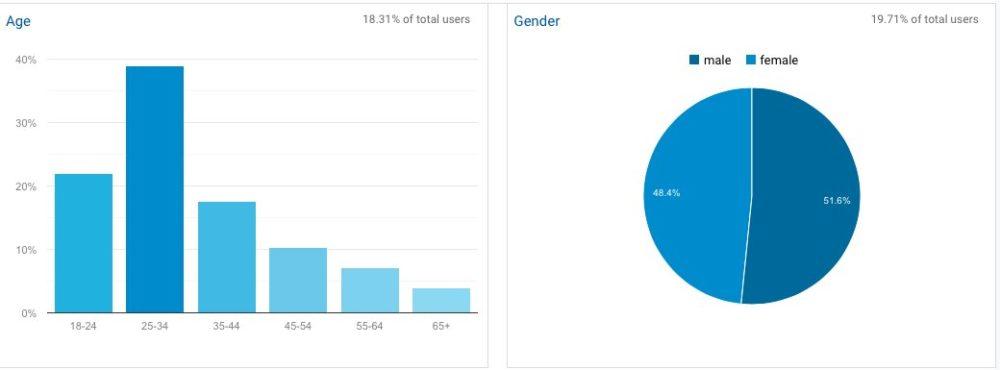
In an age where social media influencers reign supreme, brands are eagerly tapping into this dynamic marketing strategy to reach their target audiences. But, beneath teh surface of likes and shares lies a crucial element that can make or break a campaign: audience demographics. In “Connecting the Dots: Why Audience Demographics Matter in Influencer Marketing,” we delve into the intricate tapestry of consumer identities—age, gender, location, interests, and values—that shapes the effectiveness of influencer collaborations. Understanding these demographics is not just a numbers game; it’s the key to crafting resonant messages that engage, convert, and foster loyalty. Join us as we explore how aligning the right influencer with the right audience can create powerful connections, driving both engagement and success in today’s fast-paced digital marketplace.
Understanding Your Audience Profile for Effective Campaigns
In the ever-evolving landscape of influencer marketing, understanding the nuances of your audience profile stands as a foundational pillar for achieving remarkable campaign success. By diving deep into the demographic segments—such as age, gender, location, interests, and purchasing behavior—you can tailor your content to resonate with the hearts and minds of your target audience. An astute marketer knows that different demographics engage with content differently; thus, leveraging data analytics and audience insights empowers brands to craft messages that truly connect. For example, younger audiences might favor dynamic visuals and memes, while older consumers may appreciate detailed data and expert opinions. this alignment is not just beneficial; it’s crucial for maximizing engagement rates and conversion potential.
Moreover, employing a well-defined audience profile facilitates enhanced collaboration with influencers whose follower bases align with your target demographics. When selecting the right influencer, it’s essential to consider not only their reach but also their authenticity and rapport with your intended audience. The following factors can help streamline your selection process:
- Engagement Rates: Look for influencers with high interaction levels related to your niche.
- Content Style: Ensure their content aligns with your brand’s voice and message.
- Audience Insights: Review their audience metrics to confirm alignment with your target demographics.
Ultimately, the effectiveness of your influencer marketing campaigns is directly proportional to the clarity and depth of your audience understanding.

The Role of Demographics in Shaping content Strategies
Understanding the intricacies of audience demographics is crucial in influencer marketing. Different segments of the population have varying preferences, communication styles, and values. Therefore, tailoring content to specific demographics is not merely beneficial—it is essential for engagement. As a notable example, a brand targeting Gen Z consumers might prioritize platforms like TikTok and emphasize authenticity, while a company aiming for a baby boomer audience could focus on Facebook and highlight reliability. In this landscape, defining the target demographic allows brands to formulate personalized strategies that resonate and foster meaningful connections.
Moreover, demographic factors such as age, gender, location, and interests play a fundamental role in determining which influencers to collaborate with. By analyzing these factors, brands can create a picture of their ideal audience to guide their marketing efforts. Consider the following aspects when developing a content strategy:
- Age: Content should reflect the values and interests of different age groups.
- Gender: Tailoring messages to address gender-specific concerns can enhance relatability.
- Location: Geographic nuances may influence language and cultural references.
- Interests: Aligning content with hobbies and passions increases the potential for organic engagement.
| Demographic Factor | Content Strategy Implication |
|---|---|
| Age | Platform and content style selection (e.g., memes for youth) |
| Gender | Utilizing influencers who relate closely to the target group |
| Location | Adapting language and cultural references to local audiences |
| Interests | Creating niche-specific content that sparks conversation |

Leveraging Data Analytics to Connect with the Right Influencers
In today’s digital landscape, making a meaningful connection with the right influencers is critical for any marketing campaign. Data analytics provides brands with crucial insights that enable them to identify and engage with influencers who truly resonate with their target audience.By diving deep into audience demographics, marketers can determine which influencers have followers that mirror their ideal customers, allowing for collaborations that feel organic and authentic.
To effectively leverage data analytics in this regard, consider focusing on key metrics such as engagement rates, follower locations, and interests. here are a few strategies to implement this approach:
- Utilize Social Listening Tools: Monitor conversations and sentiments surrounding your brand and relevant topics to identify potential influencers.
- Segment Your Audience: Break down your target audience into different categories based on age, location, and preferences to find the right influencer match.
- Analyze Competitor Collaborations: Study which influencers your competitors are engaging with and assess their effectiveness based on audience overlap.
| Demographic Factor | Importance | Influencer Insight |
|---|---|---|
| Age Group | Aligns with content style | Targeting Millennials vs. Gen Z |
| Location | Relevance to local markets | Regional influencers for local campaigns |
| Interests | Creates authentic connections | Niche influencers match specific products |

Building Authentic Relationships through Targeted engagement
In today’s fast-paced digital landscape, forming genuine connections with your audience is more crucial than ever. Targeted engagement, rooted in a profound understanding of audience demographics, allows brands to foster authentic relationships that resonate on a personal level. By delving into the unique characteristics of your target market, you can craft tailored content that speaks directly to their interests, values, and aspirations. this personalized approach not only enhances brand loyalty but also positions influencers as relatable figures that audiences can trust and engage with.
To optimize your influencer partnerships, consider the following strategies:
- Conduct Thorough Research: Understand the demographics of both your target audience and the influencer’s followers.
- Personalize Communication: Tailor your messaging to reflect the cultural nuances of the audience.
- Leverage Data-Driven Insights: Use analytics to refine your approach and identify trends that influence audience behavior.
By implementing these tactics,brands can ensure their outreach is not just effective but also fosters meaningful interactions,resulting in a more engaged and loyal customer base.
In Conclusion
As we navigate the ever-evolving landscape of influencer marketing, understanding audience demographics emerges as not just a strategy, but an essential thread that weaves connections between brands and consumers. It’s clear that knowing who your audience is—gender, age, interests, and cultural backgrounds—allows marketers to tailor their efforts in ways that resonate deeply. The nuances of demographics illuminate the path for targeted campaigns, ensuring that messages don’t just reach an audience, but truly connect with them.
In an industry where authenticity reigns supreme, a nuanced understanding of audience demographics can provide the insight necessary to match the right influencer with the right message, fostering genuine engagement.As we conclude this exploration of the interplay between demographics and influencer partnerships, it becomes evident that the dots can only be connected when data meets creativity, paving the way for impactful storytelling that captivates and converts.
Thus, as you embark on your own influencer marketing journey, remember to look beyond the numbers. Embrace the stories and aspirations that paint a fuller picture of your target audience. After all, every accomplished campaign starts with a simple yet profound question: Who are we truly trying to reach, and how can we speak to them in a way that feels personal and relevant? In seeking to answer this, you’ll find not just clarity, but the keys to unlock meaningful connections in the dynamic world of influencer marketing.